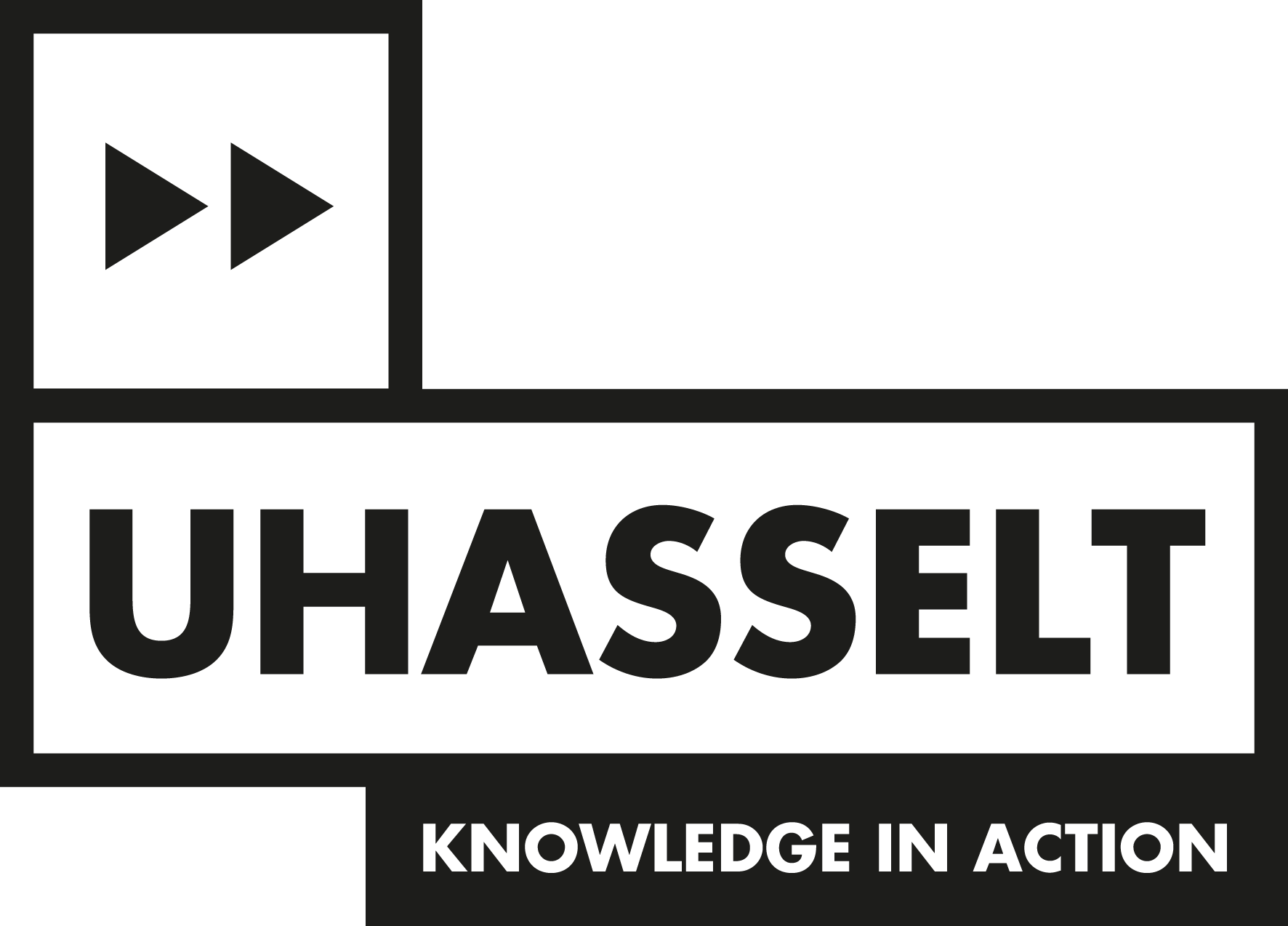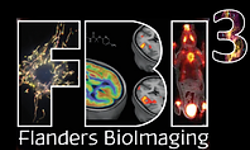Advanced Optical Microscopy Centre
Welcome to the website of the Advanced Optical Microscopy Centre (AOMC), a fluorescence microscopy core facility at Hasselt University. Our facility offers researchers access to state-of-the-art fluorescence microscopes and provides expertise and support for many types of experiments.
The AOMC is part of Flanders BioImaging, the inter-university consortium that supports international access to advanced imaging methods in Flanders. If you're interested in using AOMC equipment in your research, then Flanders Bioimaging can greatly facilitate your access to the AOMC infrastructure. Do not hesitate to apply through FBI!


Why should you collaborate with the AOMC?
- Gain access to a wide range of state-of-the-art microscopy equipment and methods.
- Tap into the experience of internationally recognized researchers.
- Design and perform experiments that fit your research needs.
- Benefit from continuous quality and performance monitoring.
- Proven experience with services and contract activities with the industry.
How can you collaborate with the AOMC?
- Perform your own independent experiments on our equipment.
- Rely on the expertise of the AOMC and the Biomedical Research Institute to provide a full service.
- Start a scientific collaboration to develop new tools or methods.
Memberships and partners
Terms of use
AOMC rules and guidelines
AOMC rules and guidelines
The microscopes of the AOMC are very sensitive and expensive equipment. They should be handled with care at all times. Improper or careless use of the microscopes results in irreliable data and could put the systems out of use for an extended period of time, causing problems for your research as well as the projects of other users. Therefore all users are expected to read, understand and comply to the following rules:
General
- All users must be trained by AOMC staff to use the microscopes. During this training, the AOMC rules will also be explained. Training is specific for each microscope.
- Trained users are allowed to bring (a reasonable number of) colleagues/students/visitors to the microscopes to explain experiments and procedures. This does not replace the mandatory training by AOMC staff required before independent use. - All users must follow the established safety procedures with regards to biological and chemical safety. Users should be aware of the risks their samples pose to them and the environment and should take appropriate action to minimize all risks. All microscope rooms are biosafety level 1.
- Users will be informed about the status of the microscopes through the mailing lists of the relevant discussion groups. Users will be added to these discussion groups when they have received their training by AOMC staff.
All users must report malfunctioning, abnormal activity/behavior/situations in or around the microscope rooms to AOMC staff immediately. - All microscope rooms are equipped with red indicator lights that indicate whether the equipment is in use. The red indicator lights should be on at all times while using the microscope. Turn the indicator lights on when entering the room and switch them off when you leave the room after switching off the microscope completely.
- Entering the microscopy rooms is forbidden for untrained persons without proper guidance.
- Always knock on the door and wait for a positive reply before entering a microscope room when the red indicator lights are on.
- When using a microscope, indicate whether it is safe to enter the microscope room when a person knocks on the door. - All microscope rooms are climate controlled. Always close the doors to the microscope rooms when entering or leaving.
- Do not switch on the room lights when the microscopes are in use.
- It is not allowed to eat or drink in the microscope rooms.
- It is not allowed to sit or stand on, or lean against the microscope (anti-vibration) tables.
- It is not allowed to install software onto the computers.
- It is not allowed to use external storage devices (USB keys, flash drives, external hard drives, …) on the computers.
- It is not allowed to use the computers for activities unrelated to microscopy or image analysis.
Booking
- Trained users will get access to the microscope booking calendar and booking forms.
- All users must book the microscopes before use.
- The microscope cannot be booked without permission from the person in charge for paying the associated costs.
- Microscopes are available 24/7 and can thus be used after office hours, in weekends or during Holidays. Make sure you have access to the BIOMED building and know the procedures for working outside of conventional working hours.
- Long-term experiments are preferentially planned in weekends, during Holidays or outside of office hours.
- Cancellation of booked time should be done as soon as possible and no later than 24 hours in advance. Other users should be informed about the cancellation through the mailing list of the relevant discussion group.
Data
- Relevant data must be saved in DATA/data/*Microscope*_*FirstName InitialOfLastName*. (eg. DATA/data/LSM880_Sam D)
- Users are free to create hierarchical subfolders in their datafolder, but CANNOT change the folderstructure or filenames after uploading the data to the Google Drive. - All data must be uploaded to the dedicated Google Drive with the specified tool. Keep in mind this will take some time when uploading large amounts of data. You can upload saved datasets while performing additional experiments to save time.
- Users are not allowed to use external storage devices (USB key, flash drive, external hard drives, …) to transfer data.
- All users will get read access to their datafolder on the Google Drive.
- Users are responsible for maintaining a backup of their data. The Google Drive should also provide save storage, but this cannot be guaranteed by the AOMC.
- Once uploaded to the Google Drive, data can be safely removed from the computers. AOMC staff will occasionally remove "old" data from the DATA drives to ensure sufficient storage capacity for new experiments. Removal of "old" data can be done without prior warning.
- If you want to keep specific experiments to reuse the settings, these should be stored in a clearly labelled folder. (eg. "Reference Experiments" or "Settings")
Samples
- All users must ensure that their samples are OK to use in a biosafety level 1 environment.
- Users are expected to prepare their samples as much as possible in their own designated labs.
- Users are expected to dispose of their samples as much as possible in their own designated labs.
- Users should provide all consumables, equipment and tools needed for their experiments.
- The AOMC will provide a few basic consumables and general use equipment such as plastic tubes (1,5mL, 2mL, 15mL and 50mL), tube racks, a set of micropipettes (P10, P100, P1000), nitrile gloves and a small pot for waste disposal.
- All microscope rooms are equipped with a small working space (bench) to manipulate/finalize samples.
Usage
- The microscopes must be used according to the protocols described in the SOPs or the procedures outlined by AOMC staff at all times.
- All users must inspect the microscope before every use and report anything irregular to AOMC staff. (eg. microscope is dirty, temperature is high, strange sound, …)
- All users must fill out the provided logbooks.
- Users must never attempt to alter hardware or software beyond what was shown during the training sessions by AOMC staff.
- All users must leave the microscope and microscope room in a clean state, ready for the next user.
- If the microscope will not be used in the next 2 hours, switch off the system completely according to the SOP.
- If another user will use the microscope within 2 hours, only switch off the components that will not be used anymore (specific lasers, temperature and CO2 control, Arc-lamp, …) - The AOMC will provide the necessary consumables to operate and clean the microscope. (immersion liquid, lens cleaning solution, lens cleaning tissue, …)
- Please acknowledge the use of equipment and/or expertise of the Advanced Optical Microscopy Centre correctly on all publications and proposals.
Acknowledgements
Acknowledgements
Thank you for acknowledging the facility.
In order to ensure continued support by the Advanced Optical Microscopy Centre, it is essential to acknowledge its role in the acquisition and/or analysis of microscopy data for publications and grant applications. Below you can find a template that can be used in all your publications.
We acknowledge the Advanced Optical Microscopy Centre at Hasselt University for support with the microscopy experiments.
Microscopy was made possible by
- the Research Foundation Flanders (FWO, project G0H3716N) - Zeiss Elyra PS.1.
- the Research Foundation Flanders (FWO, project G0H3716N) - Zeiss LSM880.
- the Research Foundation Flanders (FWO, project I001222N) - Zeiss LSM900.
- the Research Foundation Flanders (FWO, project I001222N) - Zeiss Lightsheet 7.
- the Research Foundation Flanders (FWO, project G036320N), the Francqui foundation (project FRANCQBOEW) and the Dutch Research Council (NWO VIDI 016.196.367) - Nikon Ti2e.
- the Research Foundation Flanders (FWO, projects G0B4915, G0B9922N and G0H3716N). - Homebuilt smFRET setup.
- the Research Foundation Flanders (FWO, grant G061819N) - IncuCyte S3
- the Research Foundation Flanders (FWO, project I000220N) - Jeol JEM-1400Flash
For posters and presentations, please include a link to the AOMC webpage: www.uhasselt.be/AOMC.
Small, medium, large and very large versions of the logo can be downloaded and used on publications.
Additional information about how to correctly cite your affiliation can be found on this webpage.


















































